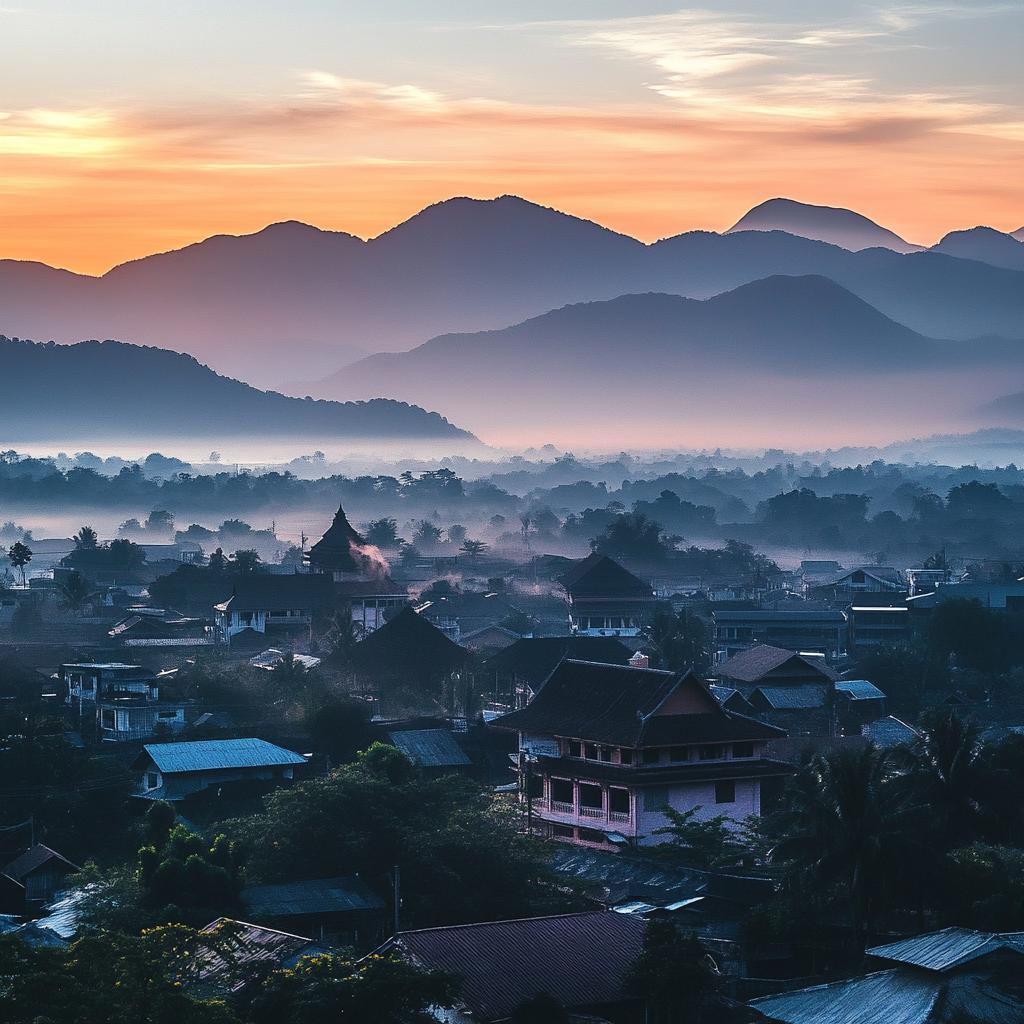The dawn broke over the serene landscape of Chiang Mai’s Phrao district, painted with warm hues of the rising sun. Yet, somewhere below that tranquil surface, a subtle but notable disturbance rippled through the earth. It was 4:33 am when a mild earthquake, registering a modest 1.4 on the Richter scale, made its presence known. According to the Thai Meteorological Department’s Earthquake Observation Division, the quake’s epicenter lay nestled in the heart of San Sai subdistrict, precisely at coordinates 19.529°N and 99.222°E. Despite the quake’s shallow depth of merely 1 kilometer, the tremor tiptoed through the district without leaving a trail of destruction.
In the serene quiet of the early morning, while most of Chiang Mai was still wrapped in the embrace of sleep, the earth’s murmurs went largely unnoticed. However, these gentle seismic whispers did not escape the radar of vigilant officials, particularly given the recent bursts of activity in neighboring Myanmar. Earlier on the same day, Myanmar was shaken by a series of earthquakes, crescendoing to a notable 5.5 magnitude tremor at 11:29 am, centered at 20.847°N and 96.083°E, with a depth of 10 kilometers.
The Thai authorities, with an eagle eye on such developments, cautioned their citizens to stay informed and alert. The prospect of aftershocks or related seismic activity has prompted heightened vigilance in the regions bordering the earthquake-affected zones of Myanmar. “The department is continuing to monitor seismic activity closely,” confirmed the Earthquake Observation Division. “Residents in Chiang Mai and nearby provinces are encouraged to follow updates from official sources and report any unusual vibrations or damage to local officials.”
The modest morning tremor serves as a poignant reminder of the intricate dance of the tectonic plates beneath our feet. Although Chiang Mai is not a region traditionally haunted by the specter of powerful quakes, its proximity to Myanmar’s fault lines necessitates a readiness for nature’s unpredictable rhythm. Local authorities are urging residents to familiarize themselves with safety protocols, particularly in older edifices that might bear the brunt of any potential underground tumult.
Meanwhile, in Bangkok, a different yet deeply tragic scene continues to unfold. Anxious hearts gather outside the remnants of a once-grand high-rise, rubble now strewn across Chatuchak district since its dramatic collapse on March 28. This calamity, a somber aftereffect of a mighty 7.7-magnitude earthquake near Mandalay, Myanmar, has left a community clinging to hope as the search for survivors endures. As of April 10, the Bangkok Metropolitan Administration reported the heart-wrenching toll: 27 lives lost, 19 souls injured, and 67 individuals still unaccounted for.
The stories emerging from this disaster scene echo across the nation, prompting prayers for those affected and uniting communities in solidarity and resilience. Thai citizens and officials alike are reminded, through these unsettling events, of the vital importance of earthquake preparedness and community support.


















It’s time for Chiang Mai to take earthquake preparations more seriously, even small tremors shouldn’t be ignored!
I totally agree. We can’t wait until something big happens to start taking action.
But aren’t these small quakes normal? Maybe we’re making a big deal out of nothing.
Small quakes may be normal, but it’s better to be prepared than regret it later.
Why aren’t the other nearby regions like Laos and Vietnam heard preparing like us?
They likely face their own issues, but silence doesn’t mean they’re unprepared.
Exactly, different regions have different priorities and risks.
The fact that earthquakes are becoming more frequent is concerning, especially with global warming happening.
Earthquakes have little to do with climate change, they’re more about tectonic plates.
That’s right, tectonics are driven by forces within Earth, not climate.
Okay, I see your point, but isn’t everything interrelated at some level?
We really should focus on retrofitting old buildings in quake-prone areas!
Easier said than done with budget constraints, unfortunately.
Still, it should be a priority. Safety comes first.
It’s heartbreaking to hear about the earthquake’s impact in Bangkok.
Indeed, my thoughts and prayers are with them. Mother nature can be so unforgiving.
I find it ironic how in a serene place like Chiang Mai, we experience such unpredictability beneath the surface.
Nature has its own ways, reminding us that nothing is ever as it seems.
Myanmar’s larger tremor is a real wake-up call for the entire region. Are they better prepared than we are?
I hope so, but it’s hard to say without being there. Everyone needs to cooperate for regional safety.
How does a small 1.4 quake even get noticed? It’s like an ant biting an elephant.
It’s not size, Eddie. It’s about being aware of how even small changes can lead to big consequences.
I guess you’re right. Better safe than sorry.
I hope they allocate more resources towards earthquake preparedness soon.
Is it just me, or are we reading more about these quakes nowadays? Media overblowing stuff?
Certainly not overblown when lives are at stake. Awareness is key!
Honestly, time for national policies on building regulations in these regions.
That’ll take a while, but completely agree. Safety starts on paper.
Strange how silence at dawn in nature can hide such dangers lurking underneath.
It’s a reminder of how little control we sometimes have over our surroundings.